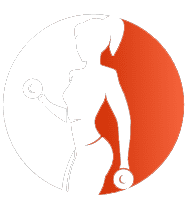Introduction
The rapid evolution of healthcare technology has ushered in a new era of patient management, marked significantly by the rise of Remote Patient Monitoring (RPM) systems. As healthcare systems grapple with challenges such as rising costs, a growing aging population, and the increasing prevalence of chronic conditions, RPM emerges as a transformative solution that leverages digital tools to enhance patient engagement and care delivery. By utilizing connected devices, healthcare providers can gather, analyze, and act upon health data in real-time, enabling a more proactive approach to patient care. This article examines the multifaceted benefits of RPM, including improved clinical outcomes, enhanced patient satisfaction, and increased operational efficiency within healthcare institutions. Understanding the potential of RPM is crucial for healthcare professionals and administrators aiming to optimize care delivery while navigating the complexities of modern healthcare landscapes.
Table of Contents
- Understanding Remote Patient Monitoring and Its Role in Modern Healthcare
- Key Advantages of Remote Patient Monitoring for Patient Outcomes
- Integrating Technology for Effective Remote Patient Monitoring Systems
- Best Practices for Implementing Remote Patient Monitoring in Healthcare Settings
- The Way Forward
Understanding Remote Patient Monitoring and Its Role in Modern Healthcare
Remote Patient Monitoring (RPM) has emerged as a vital technological advancement in the realm of healthcare, seamlessly bridging the gap between patients and providers. By leveraging a variety of digital tools and devices, RPM facilitates the collection and transmission of patient data in real-time, promoting proactive care management. Among the key advantages of remote monitoring are:
- Improved Patient Engagement: Patients are more actively involved in their health through self-monitoring.
- Early Intervention: Real-time data enables clinicians to detect potential health issues before they become critical.
- Cost-Effectiveness: RPM reduces the need for frequent in-person visits, thus lowering overall healthcare costs.
- Enhanced Accessibility: Patients in rural or underserved areas can receive quality care without the need for travel.
The integration of RPM into everyday healthcare practices promotes personalized care tailored to individual patient needs. Through continuous monitoring of vital signs and health metrics, healthcare providers can analyze trends over time, leading to more informed clinical decisions. The following table summarizes common health metrics monitored through RPM:
| Health Metric | Importance |
|---|---|
| Blood Pressure | Essential for managing hypertension and cardiovascular health. |
| Blood Glucose | Crucial for diabetes management and control. |
| Heart Rate | Indicates cardiovascular health and can detect arrhythmias. |
| Weight Tracking | Key for managing obesity and related chronic conditions. |
Key Advantages of Remote Patient Monitoring for Patient Outcomes
Remote Patient Monitoring (RPM) significantly enhances patient outcomes by enabling continuous health tracking, which allows for timely interventions and personalized care. By utilizing various devices that collect real-time data on vital signs, patients’ health can be monitored proactively, reducing the need for frequent hospital visits. Key benefits include:
- Early Detection of Health Issues: Continuous monitoring can identify potential health complications before they escalate.
- Improved Medication Adherence: Automated reminders and feedback can improve patients’ adherence to prescribed medication regimens.
- Enhanced Patient Engagement: Patients become active participants in their care, leading to better health management and improved outcomes.
Moreover, RPM tools facilitate a more efficient workflow for healthcare providers by streamlining patient data collection. This not only reduces administrative burdens but also enhances the quality of care delivered. Additional advantages include:
- Cost-Effectiveness: By minimizing emergency room visits and hospital admissions, RPM can lead to substantial healthcare cost savings.
- Data-Driven Decision Making: Clinicians can make informed decisions based on accurate data, leading to customized treatment plans.
- Enhanced Communication: Technologies that support RPM foster better communication between patients and healthcare teams, ensuring collaborative care.
Integrating Technology for Effective Remote Patient Monitoring Systems
In the evolving landscape of healthcare, the intersection of technology and patient care paves the way for more effective monitoring systems. By harnessing advanced digital tools, providers can facilitate real-time health data collection, enabling a more personalized approach to treatment. Key technologies integrated into remote patient monitoring systems include:
- Wearable Devices: Smartwatches and fitness trackers that monitor metrics such as heart rate, blood pressure, and activity levels.
- Mobile Health Apps: Applications that allow patients to log symptoms, medication adherence, and lifestyle choices, enhancing communication with care teams.
- Connected Sensors: Devices that can remotely monitor vital signs or specific health conditions, transmitting data to healthcare providers instantly.
These tools not only streamline care delivery but also foster patient engagement, making individuals active participants in their health management. Furthermore, the integration of artificial intelligence (AI) and machine learning (ML) facilitates advanced data analytics, leading to improved decision-making and outcomes. A glance at the potential benefits of these technologies illustrates their significance:
| Benefit | Description |
|---|---|
| Improved Patient Outcomes | Timely intervention and tailored treatment plans based on continuous data. |
| Cost Efficiency | Reduced hospital readmissions and emergency visits through proactive care. |
| Enhanced Accessibility | Utilization of remote consultations allows for broader reach, especially for rural areas. |
Best Practices for Implementing Remote Patient Monitoring in Healthcare Settings
To successfully integrate remote patient monitoring into healthcare settings, organizations should prioritize a comprehensive onboarding process for both patients and healthcare providers. This involves not only training staff on the technology but also educating patients about its benefits and usage. Key components of this onboarding process include:
- Identifying target patient populations who will benefit most from remote monitoring.
- Providing clear instructions on device usage to ensure compliance and ease of use.
- Establishing a support system for troubleshooting and answering questions.
- Utilizing data analytics to monitor patient engagement and adjust training as necessary.
Healthcare organizations must also focus on creating seamless workflows that integrate remote patient monitoring into existing care protocols. This can be achieved by:
- Collaborating with IT departments to ensure interoperability between monitoring devices and electronic health records (EHR).
- Developing protocols that define how and when data collected from remote monitoring will be used in clinical decision-making.
- Regularly evaluating the effectiveness of remote monitoring initiatives through patient feedback and clinical outcomes.
- Ensuring compliance with healthcare regulations such as HIPAA to protect patient data privacy.
The Way Forward
the integration of remote patient monitoring (RPM) into healthcare delivery systems represents a significant advancement in the management of patient care. By facilitating continuous health tracking and enabling real-time data collection, RPM not only improves patient engagement and adherence to treatment plans but also enhances diagnostic accuracy and clinical decision-making. The capacity to monitor patients outside conventional settings empowers healthcare providers to detect potential complications early, thereby reducing hospitalizations and healthcare costs. Furthermore, the scalability of RPM technologies fosters a more personalized approach to health management, allowing for tailored interventions that meet the unique needs of diverse patient populations. As healthcare systems continue to evolve, the adoption of remote patient monitoring will be pivotal in optimizing health outcomes and redefining the patient experience, ultimately leading to a more efficient and responsive healthcare ecosystem. Moving forward, stakeholders must prioritize investment in RPM technologies and infrastructure, ensuring that the benefits of this innovative approach are accessible to all patients and providers alike.




